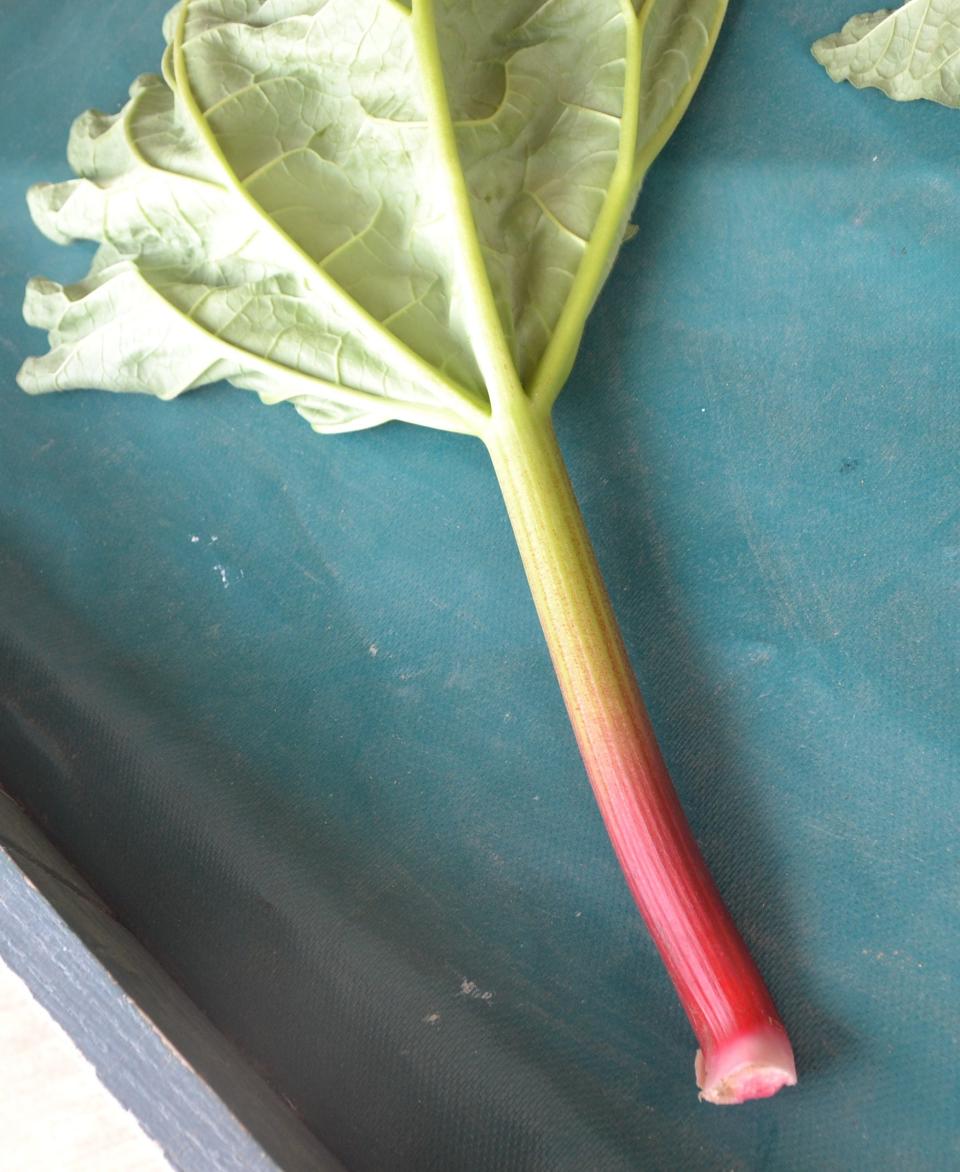Rhubarb grown in Far East for medical reasons; Brits, Americans made it a culinary dish
When thinking of spring foods that aren’t readily available at other times of the year, what comes to mind? Besides the elusive mushrooms we used to hunt growing up, rhubarb is another spring plant I didn’t learn to appreciate until years later.
When I was a child there was a large broad leaf plant with red stalks growing alongside the shed, and I never understood why my parents were excited to pick and prepare it. It was something they looked forward to each spring. I thank my co-worker Emily Marrison for bringing some of these details forth to share.
According to the OSU Extension Fact Sheet, “Growing Rhubarb in the Home Garden,” rhubarb initially was grown in the Far East for medicinal purposes more than 2,000 years ago. Around the 18th century, the British and Americans began to use it in culinary dishes. For this plant to grow, it requires winter temperatures below 40 degrees to break dormancy and stimulate spring growth. It also needs summer temps that average less than 75 degrees. Thus, Ohio weather makes it a perfect fit.

Many health benefits come with bite of rhubarb
The leafstalks are the edible part of the plant, and we’ve probably all heard the leaves should not be eaten because they are poisonous. The leaves indeed contain oxalic acid. Many fruits and vegetables contain oxalic acid naturally like spinach and sweet potatoes, but you would have to consume a few pounds of rhubarb leaves for them to be lethal.
Rhubarb plants can be grown in a raised garden bed or an area that is removed from other plants as it is a perennial. Rhubarb is a vegetable, though we treat it more like a fruit when we consume it. Like many fruits, rhubarb contains anthocyanins, a type of antioxidant. The American Institute for Cancer Research says anthocyanins have demonstrated protective effects on blood vessels and blood pressure, and recent research suggests anthocyanins may offer anti-cancer benefits, too.
In addition to these health qualities, a half cup of cooked rhubarb provides more than one-third of the recommended dietary intake of vitamin K1. And it gives us 2 grams of fiber (which helps prevent colorectal cancer), as well as calcium and vitamin C.

More: Tips to lessen the space between loads and limits in daily life
Cut, trim, chop and freeze
If you have an overabundance of rhubarb, it is easy to freeze. Wash, trim and cut into 1-inch lengths. Heat rhubarb in boiling water for 1 minute and then place promptly in cool water to help retain color and flavor. Then it can be packed into containers and covered with cold 40% syrup. Think about your favorite recipe and how you might use it upon thawing if you are going to freeze it as it can be packed dry without syrup or sugar.
I must admit, I prefer the flavor when combined with other fruits to give the tangy flavor some balance. Here is a delicious recipe from MyPlate.gov. for you to try.
Rhubarb Blueberry Crisp
Makes: 9 Servings, Preparation Time: 15 minutes, and Cook Time: 45 minutes
Ingredients
Topping:
1/4 cup packed brown sugar
1/2 cup all-purpose flour
1/2 cup old fashioned rolled oats
1/4 cup margarine or butter, melted
Fruit Filling:
3 cups chopped rhubarb
3 cups blueberries
2 tablespoons cornstarch
1/2 cup sugar
1 cup 100% fruit juice (any type)
1 teaspoon vanilla
Directions
Wash hands with soap and water.
Preheat oven to 350 °F.
In a medium bowl, stir together brown sugar, flour and oats. Mix in the margarine or butter and set aside.
Spread the rhubarb and blueberries in an 8x8 inch baking dish and set aside.
In a medium saucepan, mix cornstarch and sugar and stir in the juice. Cook over medium heat, stirring all the time, until the mixture has thickened. Turn off the heat.
Stir in vanilla and pour the mixture over the rhubarb and blueberries.
Crumble oat mixture on top of the fruit.
Bake for 45 minutes or until topping is browned and fruit is bubbling at edges. Serve warm or cold.
Melinda Hill is an OSU Extension Family & Consumer Sciences Educator and may be reached at 330-264-8722 or hill.14@osu.edu
CFAES provides research and related educational programs to clientele on a nondiscriminatory basis. For more information, visit cfaesdiversity.osu.edu.
This article originally appeared on The Daily Record: Rhubarb is all-purpose vegetable - palate pleasing and health benefits

